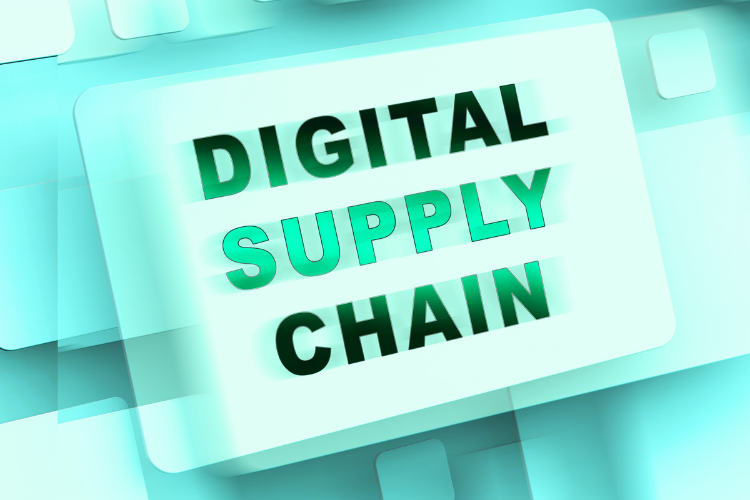
DIGITAL SUPPLY CHAIN – WHAT YOU NEED TO KNOW
The most vital part of any company is its supply chain and how it is run to maximize potential and business productivity. As with many modern developments in the logistics world, digital transformation redefines how supply chains are managed and led, allowing global supply chain operations to become more advanced and optimized.
What Is A Digital Supply Chain?
A digital supply chain is a method in which a company delivers products of a digital nature to its customers. Thus, every part of a traditional supply chain is digitalized. This includes anything from manufacturing, distribution, transportation, and administration.
The digitization of a supply chain allows for enhanced processes on the most advanced and complicated supply chains to reach complete optimization.
The products which could be delivered through a digital supply chain are as follows:
Music
Videos
Podcasts
Books
Movies
These products differ from a traditional supply chain. Still, they encompass the need and collaboration to move from physical products to media and technology-related products that are becoming more popular with each passing day.
DIGITAL SUPPLY CHAIN VS TRADITIONAL SUPPLY CHAIN
Supply Chain Differences
The core processes and values in a traditional and digital supply chain are the same. However, the factor that enables individuals to differentiate between the two is the approach taken to both of them.
In regards to a traditional supply chain, there is a direct approach where the function of the chain depends on predetermined and specific workflows. These processes involve making a final product by obtaining raw materials, which are then produced and delivered to the end customer.
However, the visibility of a traditional supply chain is limited to the absence of combining different systems and acts within the chain.
Therefore, the key elements and plans of a traditional chain are:
- Researching to estimate product demand
- Procurement of raw materials
- Raw materials for manufacturing
- Manufacturing
- Distribution
- Shipping
- Sale
- Consumption
>> Digital Supply Chains: A Race to Industry 4.0 | PWC
- Digital Supply Chains
In comparison, digital supply chains use a network approach that applies digital processes to optimize and adapt to quickly changing circumstances. These supply chains function in real-time and are predictive, thus enabling problems to be identified earlier than usual.
There are many critical elements of a digital supply chain; just a handful of them that help to differentiate from a standard chain is:
- Technology- AI, Machine learning, Cloud Computing, etc.
- Partnerships- Building mutually beneficial partnerships and alliances to help optimize supply chain value
- Customer Focus- Evaluating trends and building long-term customer relationships and overall supply chain evaluation to gross higher profit, services, and customer satisfaction.
- Supply Chain Management- management software enables managers to optimize, implement and strategically arrange the flow of goods to minimize cost and maximize success.
Why Engage With The Digital Supply Chain?
- Improved Cash Flow
Many factors contribute to why companies should engage with a digital supply chain, one of them being the incentive of improved cash flow and management.
- Optimize Lead Times
The control a business has over its supply chain by choosing digitization means that raw materials and turning those into products can be at a higher capacity and be available with more frequency. Lead times are optimized through this process as supply chain efficiency is increased.
This means that consumers are happy through heightened lead times, but companies can reap the benefits of increased profit and business.
- Improved Performance
Companies are open to numerous amounts of data every day when running a supply chain. However, the issue many faces is knowing what to do with such information and how to organize and improve from it. When using a digital supply chain, data visibility or visualization can be used. This gives an accurate, real, and managed view of all the data within the supply chain and what is happening within each department in a company.
The analysis of this data can help supply chain management determine areas that need improvement in
performance and accuracy, therefore benefiting more advanced strategies and customer appeal.
In conclusion, implementing a digital supply chain requires a comprehensive plan to execute correctly. However, many benefits can be reaped by using a digital chain over a traditional supply chain. Many digital technologies will begin to develop, and alongside this, companies will start to put like-minded strategies in place to keep up with the continued growth of the technological aspect of the future of logistics.
About us:
We are committed to give our best in service satisfaction by having branches office in China - Hong Kong - Shenzhen - Shanghai - Ho Chi Minh City - Haiphong.
CONTACT US
- Email: enquiry@vico.com.hk
- Facebook: https://www.facebook.com/VICOLogistics
- Linkedin: https://www.linkedin.com/company/vico-logistics-hk/
- Zalo: https://zalo.me/2107914549808764701
- Instagram: https://www.instagram.com/vicologistics/
Read more:
>> Where to find Vietnam manufacturers?
>> What are the opportunities and challenges of investing in Vietnam in 2022?
>> How to estimate the delivery cost?
>> Top 3 methods of machinery transport
>> Supply chain for the renewable energy sector?
>> All you need to know about Certificate of Origin (C/O)?






